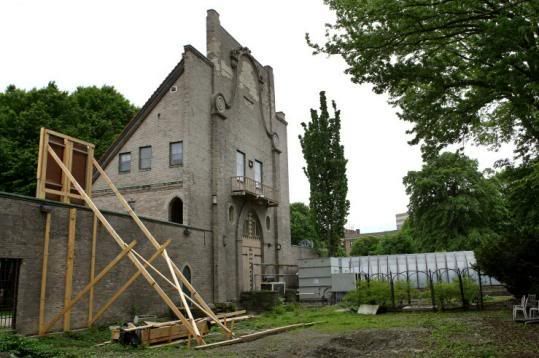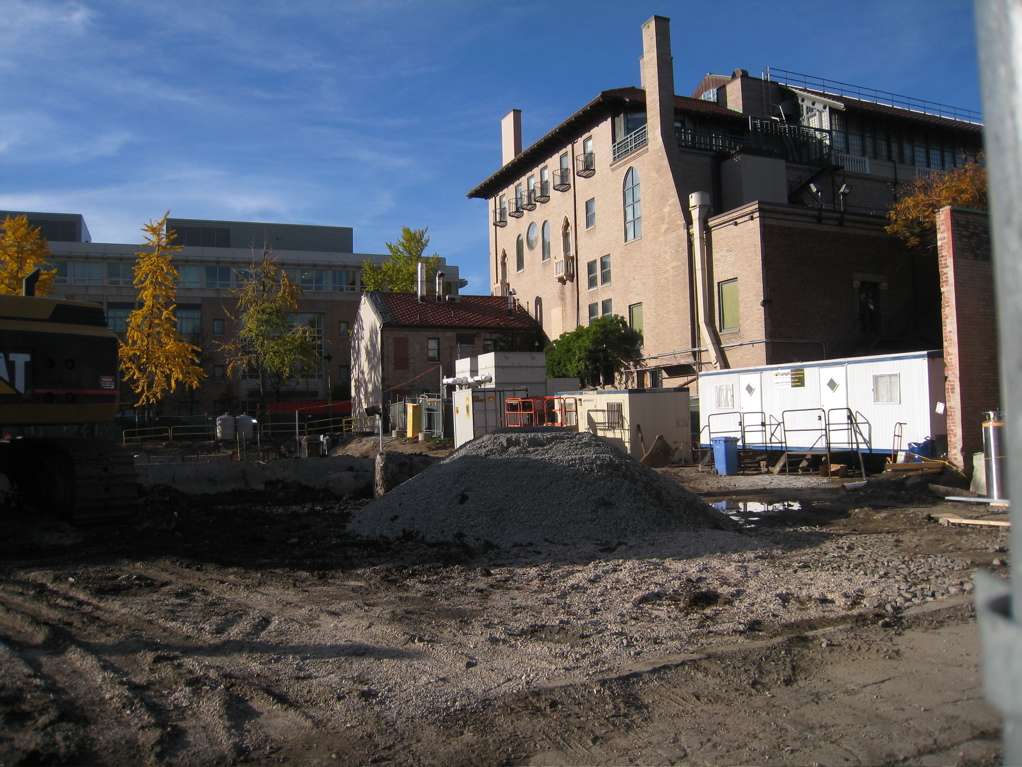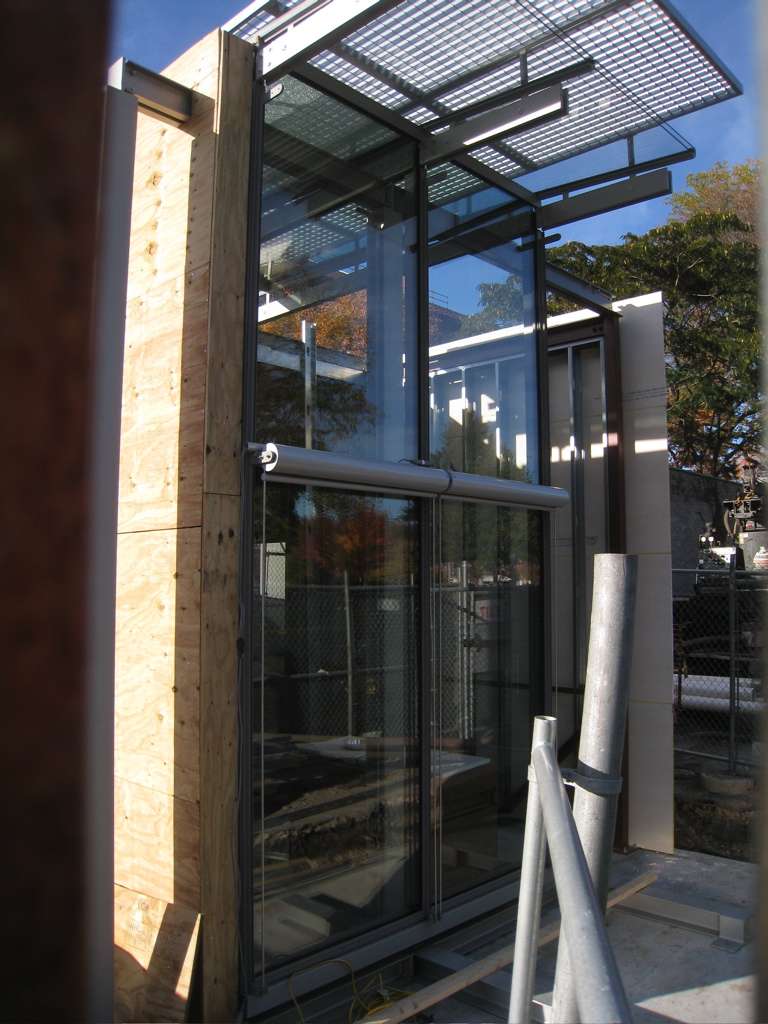What fate for the carriage house that Mrs. Jack built?
Dispute erupts over Gardner Museum plan
By Sebastian Smee, Globe Staff | May 17, 2009
Today, the Carriage House at the rear of the Isabella Stewart Gardner Museum stands forlornly facing an empty lot, strewn with detritus and blocked by fences. It is an imposing structure with a dramatic facade, but few people are even aware it exists, or that Gardner helped design it or that her two dogs were buried nearby, their names painted on a connecting wall.
Fewer still know it may be about to disappear.
The museum's board of trustees votes tomorrow on a major expansion plan that would pave the way for the Carriage House's demolition. And, at the 11th hour, the fate of the once-handsome building has erupted into a furor, perhaps the most serious crisis at the museum since the nighttime theft of several masterpieces in 1990.
Museum staff members have approached the Globe in recent days as part of a last-ditch effort to stop the plan, directing attention to as-yet unpublished research supporting the Carriage House's historic importance and arguing that museum director Anne Hawley has stifled debate on the subject. Meanwhile, the museum has hired a public relations company, Weber Shandwick Worldwide, to try to limit the potential damage.
The controversy over whether to preserve or demolish the Carriage House for the sake of a proposed new building designed by Renzo Piano has been smoldering for several years. The purpose of the expansion, which would accommodate a shop, restaurant, offices, and performance space, is to take pressure off the original Venetian palazzo, which is currently providing some functions not foreseen by Gardner.
The expansion proposal has been put before a number of regulatory bodies, all of which have approved it, and cleared what appeared to be a final hurdle in March when the Supreme Judicial Court of Massachusetts confirmed that the project is "entirely consistent with the primary purpose" of Gardner's famously restrictive will.
Hawley says that there is nothing new in the research, and that all relevant information regarding the Carriage House's historical significance was made available to the regulatory authorities that approved the project, from the Boston Landmarks Commission to the Massachusetts Historical Commission. She says that each regulatory body considered whether the museum had any alternative to the planned expansion, and each body concluded that the project was justified. Furthermore, she says that the Carriage House, which has lately been used for storage and a visiting-artist apartment, "was never public and never part of the visitor experience" and is not protected by Gardner's will.
In essence, the debate comes down to a fight over Gardner's legacy. "What would Isabella do?" is the question everyone seems to be asking. Both sides believe themselves best placed to understand what she intended.
On the one hand, the museum's leadership, while acknowledging the Carriage House's historic value, maintains that demolishing it would accord with Gardner's wishes for the long-term health of her museum. The other side, while recognizing the pressures on the original building, believes that the museum leadership has failed to understand the way the Carriage House's design reflects the deeper significance of Gardner's aesthetic philosophy.
The latest unrest has been fueled by a new essay by Robert Colby, a scholar with a PhD in Renaissance art history from the Courtauld Institute of Art in London who recently completed a temporary stint as a curatorial fellow at the Gardner. Colby's essay draws on a 1978 article by Rollin Hadley, a former director of the museum, which notes that the Carriage House's facade was inspired by a photo of the ceremonial archway of Altamura, a town in southern Italy. "Altamura" was also the name of an aesthetic utopia - a monastery where art was believed to possess redemptive qualities - imagined by the great art historian Bernard Berenson, Gardner's friend and adviser. Colby uses new archival, documentary, and interpretive material to argue that the idea behind "Altamura" helped inspire Gardner's developing self-conception and her vision for the museum. Immediately after Berenson sent her a postcard of the Altamura archway, Gardner chose to model the facade of her carriage house on it.
Colby has been hesitant about releasing his findings. He says he admires Hawley and broadly supports the direction in which she has been taking the museum. He has been warned by senior colleagues that he may ruin his career if he releases his essay. But on Wednesday he sent copies of it to the museum director and two members of the board, hoping the board would incorporate the new information into its decision-making process.
Both sides are marshalling allies to their cause. Trevor Fairbrother, a freelance curator and former staffer at the Museum of Fine Arts who has a long association with the Gardner, wrote in a private letter obtained by the Globe that Colby's findings "make it certain that the Carriage House, walls and trellises constituted a key element in the founder's vision of Fenway Court as an architectural and horticultural statement."
In the letter, Fairbrother regrets the failure of local historical preservation bodies to make a rigorous study of the Carriage House's significance. "If those agencies were reviewing the case today," he writes, Colby's "new research would likely persuade them to preserve the building."
The Boston Landmarks Commission says it is now examining Colby's essay, and the Boston Preservation Alliance is reviewing the situation based on the new information.
Meanwhile, the museum sent the Globe a list of quotes by supporters of the Piano-designed expansion, from local Fenway residents to Mayor Thomas M. Menino. Some on the museum staff, who asked to remain anonymous out of fear for their jobs, believe that various alternatives, such as moving the Carriage House, were not given fair consideration.
Some former staffers are also questioning the planned demolition.
"The Carriage House is wonderful," says Barbara Mangum, a former head of conservation at the museum. "Architecturally it's very interesting. It was built by Isabella Stewart Gardner, so it's part of her intended estate. But it isn't protected by her will.
"I'm sympathetic to the need to expand," continues Mangum. "But I wonder, could it be moved, or incorporated into the new building?"
During the period of his research, Colby attempted to speak with Hawley and other senior staff about his findings, but was unsuccessful. Hawley acknowledged in an interview that at a staff meeting, after debate about the new extension, she told staff members that if they couldn't support the proposal, they might want to consider leaving the museum. She describes Colby's essay as "an interesting interpretation," a description echoed by Alan Chong, a curator at the museum. "It's possible the Carriage House did mean something to [Gardner]," Chong says, but "there is a tremendous lack of evidence."
Colby questions whether the museum has made a thorough examination of the building's history. "A museum's job is not to take the material remnants of the past and critique them, find them wanting and then dispose of them," he says. "It's to study those remnants."
Ellen Lipsey, executive director of the Boston Landmarks Commission, says the commission asked the museum "for any indication that Mrs. Gardner was directly involved in that very unusual design" of the Carriage House.
When the museum first submitted its proposal to the Boston Landmarks Commission in 2007, it failed to include Hadley's article about the connection with Berenson's Altamura. "To be frank," said Hawley, "I didn't know about it." Instead, it was brought to the attention of the commission by Gardner's biographer, Douglass Shand-Tucci, who supports the Carriage House's demolition. The museum subsequently provided the article to all regulatory authorities.
Hawley says the museum has acknowledged all along that the Carriage House has historical significance. "I have a deep affection for that structure," she says, while adding that architecturally, it is "not that interesting." But she says that after an exhaustive process of researching alternatives, the museum concluded that there was no feasible way to complete the new building while preserving it.
Sebastian Smee can be reached at
ssmee@globe.com.









